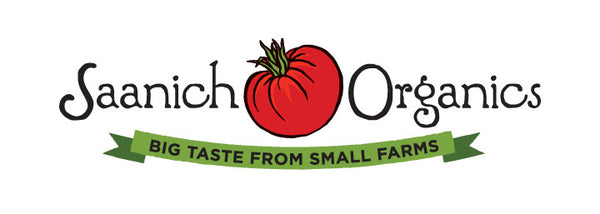At Saanich Organics - Seeds of the Revolution, we sell exclusively open pollinated seeds. Open pollinated seeds are produced by the cross-pollination of plants of the same variety. This means that anyone can grow these plants, save the seeds, and the next generation will grow true to type with all of the characteristic traits and resilience belonging to that variety.
This differentiates open pollinated seeds from hybrid seeds. Hybrid seeds are the result of the crossing of two different varieties, or even of two closely related species. The first generation of a hybrid seed will have unique advantages attributed to hybrid vigour, but from the second generation onwards, the seeds will not produce true to type, and an unpredictable and variable range of genetic traits, including undesirable ones, will emerge among the plants.
There are certainly many interesting and useful hybrid varieties, including ones we ourselves grow for market garden production. However, we are reliant on a relatively small group of seed producers to grow proprietary hybrid varieties, and it’s important to us as local growers to maintain open-pollinated options that keep us in control of our seed stock genetics.
Open pollinated and heirloom seeds have been bred and selected over many seasons, sometimes for hundreds or even thousands of years, to produce the best plants in the regions where they are grown. (Find out how regional adaptation plays a role in plant breeding here.) It is the oldest method of plant breeding, through which we can draw a line directly from ourselves to the earliest humans to practice agriculture. OP seeds may not boast hybrid vigour, but they are developed to perform best year after year, and can be refined and adapted to exhibit new traits and withstand new conditions, by anyone, in perpetuity. Open pollinated seeds keep control over seed genetic resources in the hands of growers everywhere, and provide resilience in our collective seed supply, which is the foundation of our food system.
If you’re curious about seeds and seed sovereignty, why not try saving your own open pollinated seeds this year? It can be as simple as setting aside a couple tomatoes for seed processing, leaving a section of your peas to mature and dry on the plant, or clipping dried seed heads off your favourite flower patch. Just be sure to do some research into isolation distances and genetic population sizes if you’re moving beyond the experimental stage and getting serious about your seed saving.

